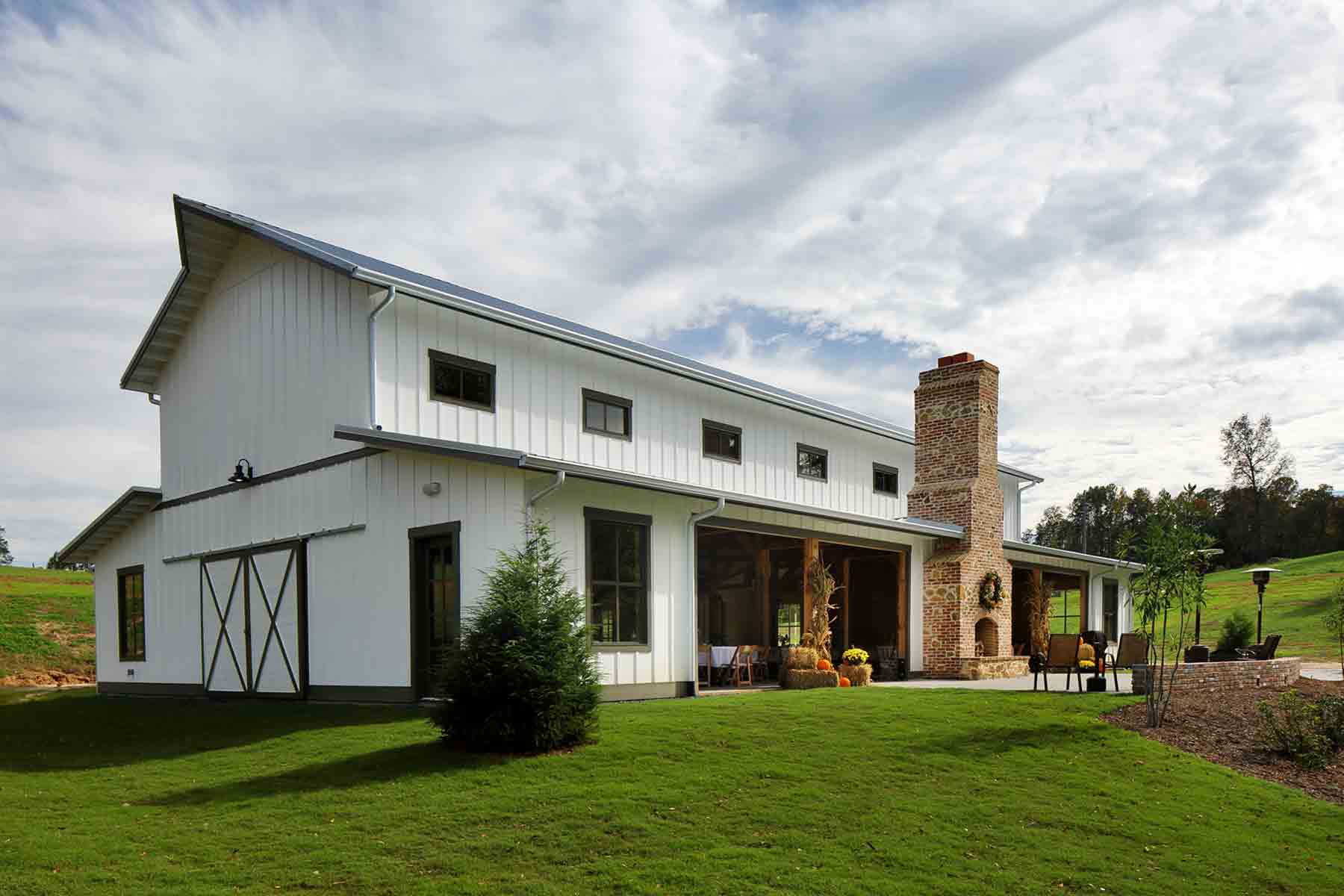Barndominiums Vs. Traditional Houses: an In-depth Contrast of Lifestyle and Performance
The decision in between barndominiums and standard homes encompasses various factors, including lifestyle preferences and useful requirements. Barndominiums are identified by their open formats and adaptability, often attracting those that focus on communal living and convenience. In comparison, typical homes use a more structured environment, which might better serve households looking for personal privacy and a feeling of background. As we examine the cost effects and ecological factors to consider, it ends up being clear that the option extends beyond simple looks and capability; it invites a much deeper expedition of what truly specifies a home.
Overview of Barndominiums
Barndominiums, a novel housing trend getting appeal across numerous regions, mix the rustic appeal of barn-style architecture with the functionality of contemporary home. These one-of-a-kind structures commonly are composed of a metal or timber structure, incorporating open flooring strategies and high ceilings with energy-efficient attributes. Often situated on extensive country properties, barndominiums use house owners the opportunity to enjoy a peaceful way of living while providing enough area for various activities.
The versatility of barndominiums expands past their visual allure; they can act as both living quarters and useful areas for pastimes, workshops, or perhaps local business. Their flexible style enables simple customization, accommodating varied household requirements and choices. Numerous proprietors appreciate the reduced maintenance needs associated with metal home siding and roof covering, contributing to long-term durability.

Attributes of Typical Homes
Highlighting ageless style and comfort, typical homes are identified by their unique architectural styles, which frequently mirror historic impacts and local aesthetics. Usual features consist of symmetrical exteriors, gabled roof coverings, and an emphasis on craftsmanship, causing a cozy and welcoming environment.
Traditional homes frequently incorporate elements such as crown molding, wainscoting, and hardwood flooring, boosting their classic allure. They normally include numerous spaces with specified functions, advertising household communication while enabling personal privacy. see website. The design typically consists of official living and dining locations, which are helpful to enjoyable visitors and hosting family members celebrations
Outside products such as brick, wood, or rock are frequently made use of, adding to longevity and a sense of permanence. Barndominium repair. Additionally, numerous standard homes are designed with front verandas or stoops, fostering a sense of neighborhood and link with the neighborhood
Landscape design plays a significant function in conventional home layout, with well-kept gardens and pathways that boost aesthetic charm - view now. Generally, traditional homes symbolize a feeling of nostalgia and security, appealing to those that value heritage and a more structured living environment
Expense Comparison
Commonly, an expense comparison between barndominiums and standard homes exposes considerable differences in construction expenses and total financial investment. Barndominiums, usually built from steel or steel frameworks, typically sustain reduced product and labor costs than standard homes developed from wood and brick. The streamlined style of barndominiums can equate to minimized construction times, additionally lowering labor expenses and expediting tenancy.
Generally, the cost per square foot for a barndominium ranges from $100 to $150, while standard homes can vary widely, typically dropping in between $150 and $300 per square foot, relying on location, products, and design complexity. This cost disparity makes barndominiums an eye-catching choice for budget-conscious purchasers seeking larger home without compromising high quality.
Furthermore, barndominiums may result in long-term cost savings via reduced maintenance costs, energy effectiveness, and insurance rates. Their durable building products frequently need less upkeep gradually contrasted to standard homes. Nevertheless, it is necessary to think about that while initial costs may be lower for barndominiums, the final investment will also rely on specific personalization and preferred services, which can influence the overall expenditure in both real estate kinds.
Way Of Life and Area Factors To Consider
When thinking about webpage way of life and area, barndominiums provide an unique versatility that interest a range of homeowners. These hybrid frameworks integrate domestic coping with useful space, typically including open floor strategies that can be adjusted to suit private demands. This flexibility is specifically helpful for families or individuals seeking a tailored living environment, permitting varied usages such as home offices, workshops, or leisure areas.

Additionally, the visual charm of barndominiums can provide to both rustic and contemporary preferences, making them a flexible selection for different layout preferences (Barndominium repair). Ultimately, the selection between a barndominium and a standard home frequently depends upon how well each alternative aligns with the house owner's lifestyle ambitions and spatial needs, highlighting the significance of taking into consideration personal concerns in the decision-making procedure
Environmental Effect and Sustainability
The ecological impact and sustainability of barndominiums present engaging benefits compared to standard homes. Largely constructed from steel and various other sturdy materials, barndominiums are typically constructed using recycled resources, minimizing the need for new materials and lessening waste. Their layout usually highlights open areas, which can bring about reduced energy consumption for heating & cooling contrasted to typical homes with more segmented layouts.
Additionally, barndominiums can integrate lasting attributes such as photovoltaic panels, rain harvesting systems, and progressed insulation techniques, enhancing their energy efficiency. The flexibility of their style enables house owners to incorporate these modern technologies extra flawlessly than in several traditional homes, which might call for considerable retrofitting.
In addition, barndominiums commonly need fewer sources for building due to their simpler, more reliable styles (visit site). In general, barndominiums represent a forward-thinking strategy to lasting living, lining up with contemporary ecological top priorities.
Final Thought
In summary, the selection between barndominiums and typical homes hinges on specific lifestyle choices and functional demands. Barndominiums, with their open formats and sustainable products, cater to those looking for flexibility and common living.